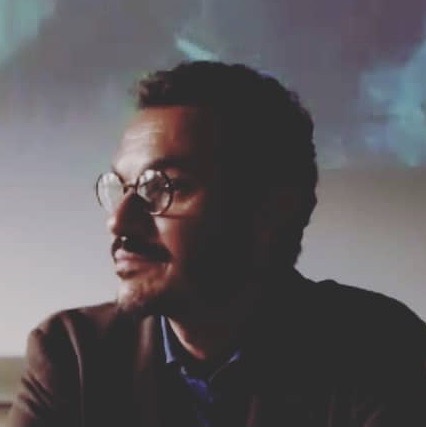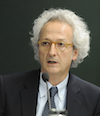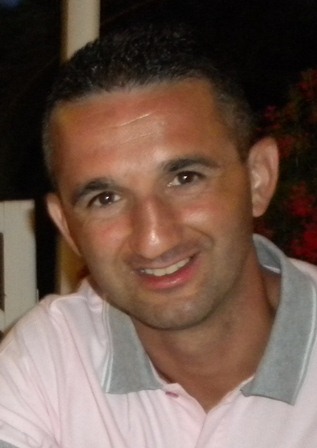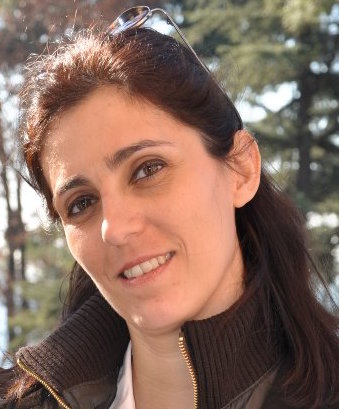Studying at the University of Verona
Here you can find information on the organisational aspects of the Programme, lecture timetables, learning activities and useful contact details for your time at the University, from enrolment to graduation.
Academic calendar
The academic calendar shows the deadlines and scheduled events that are relevant to students, teaching and technical-administrative staff of the University. Public holidays and University closures are also indicated. The academic year normally begins on 1 October each year and ends on 30 September of the following year.
Course calendar
The Academic Calendar sets out the degree programme lecture and exam timetables, as well as the relevant university closure dates..
| Period | From | To |
|---|---|---|
| Sem. IA (31.10.16 sosp.lezioni) | Oct 3, 2016 | Nov 12, 2016 |
| Sem. IB | Nov 14, 2016 | Jan 21, 2017 |
| Sem. IIA | Feb 27, 2017 | Apr 22, 2017 |
| Sem. IIB | Apr 24, 2017 | Jun 10, 2017 |
| Session | From | To |
|---|---|---|
| Sessione d'esami invernale | Jan 23, 2017 | Feb 25, 2017 |
| Sessione d'esame estiva | Jun 12, 2017 | Jul 29, 2017 |
| Sessione d'esami autunnale | Aug 21, 2017 | Sep 23, 2017 |
| Session | From | To |
|---|---|---|
| Sessione di Laurea Estiva | Jul 10, 2017 | Jul 15, 2017 |
| Sessione di Laurea Autunnale | Dec 18, 2017 | Dec 21, 2017 |
| Sessione di Laurea Invernale | Mar 23, 2018 | Mar 29, 2018 |
| Period | From | To |
|---|---|---|
| Festa di Ognissanti | Nov 1, 2016 | Nov 1, 2016 |
| Festa dell'Immacolata | Dec 8, 2016 | Dec 8, 2016 |
| Vacanze Natalizie | Dec 23, 2016 | Jan 7, 2017 |
| Vacanze Pasquali | Apr 14, 2017 | Apr 18, 2017 |
| Festa della Liberazione | Apr 25, 2017 | Apr 25, 2017 |
| Festa dei Lavoratori | May 1, 2017 | May 1, 2017 |
| Festa del Santo Patrono - San Zeno | May 21, 2017 | May 21, 2017 |
| Festa della Repubblica | Jun 2, 2017 | Jun 2, 2017 |
| Vacanze Estive | Aug 14, 2017 | Aug 19, 2017 |
Exam calendar
Exam dates and rounds are managed by the relevant Culture and Civilisation Teaching and Student Services Unit.
To view all the exam sessions available, please use the Exam dashboard on ESSE3.
If you forgot your login details or have problems logging in, please contact the relevant IT HelpDesk, or check the login details recovery web page.
Should you have any doubts or questions, please check the Enrollment FAQs
Academic staff
 maurizio.boscaini@univr.it
maurizio.boscaini@univr.it
 paolamaria.caleffi@univr.it
paolamaria.caleffi@univr.it
 paolodalben@tin.it
paolodalben@tin.it
 mila.dallapreda@univr.it
mila.dallapreda@univr.it
 ettore.deangeli@univr.it
ettore.deangeli@univr.it
 maxclaudiogallo@gmail.com
maxclaudiogallo@gmail.com
 mariangela.lando@univr.it - marilando771@gmail.com
mariangela.lando@univr.it - marilando771@gmail.com
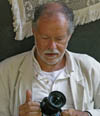
Mastrocinque Attilio
 attilio.mastrocinque@univr.it
attilio.mastrocinque@univr.it
 +39 045802 8386
+39 045802 8386
 marco.menato@univr.it
marco.menato@univr.it

Migliorati Lorenzo
 lorenzo.migliorati@univr.it
lorenzo.migliorati@univr.it
 045802 8135
045802 8135
 giuseppe.pernigo@univr.it
giuseppe.pernigo@univr.it
 alberto.scandola@univr.it
alberto.scandola@univr.it
Tani Stefano
 stefano.tani@univr.it
stefano.tani@univr.it
 +39 045802 8110
+39 045802 8110
 silvano@tommasoli.it
silvano@tommasoli.it
 ivan.valbusa@univr.it
ivan.valbusa@univr.it
Study Plan
The Study Plan includes all modules, teaching and learning activities that each student will need to undertake during their time at the University.
Please select your Study Plan based on your enrollment year.
1° Year
| Modules | Credits | TAF | SSD |
|---|
2° Year activated in the A.Y. 2017/2018
| Modules | Credits | TAF | SSD |
|---|
One course to be chosen among the following3° Year activated in the A.Y. 2018/2019
| Modules | Credits | TAF | SSD |
|---|
One course to be chosen among the followingOne course to be chosen among the following| Modules | Credits | TAF | SSD |
|---|
| Modules | Credits | TAF | SSD |
|---|
One course to be chosen among the following| Modules | Credits | TAF | SSD |
|---|
One course to be chosen among the followingOne course to be chosen among the following| Modules | Credits | TAF | SSD |
|---|
Legend | Type of training activity (TTA)
TAF (Type of Educational Activity) All courses and activities are classified into different types of educational activities, indicated by a letter.
English SC (i) (2017/2018)
The teaching is organized as follows:
Learning outcomes
------------------------
MM: I MODULO PARTE (I)
------------------------
The module is aimed at providing an introduction to English linguistics, both in diachronic and in synchronic terms, in order to consolidate the students’ linguistic skills that are mostly relevant to the professional prospects related to the degree in Communication Sciences. Diachronically, the module will outline the key stages of the history of the English language, with a particular attention on the evolution of the role of English as the language of international communication following globalisation. From a synchronic perspective, the module will focus on aspects of the language at the phonological/phonetic and morphological levels. The peculiarities of the phonological/phonetic and morphological features related to the use of English as a lingua franca will be highlighted through a comparative analysis with major native varieties of English.
------------------------
MM: II MODULO PARTE (P)
------------------------
The aim of the module is to develop students’ ability to critically observe the use of language in specific communicative settings through an introduction to the discipline of discourse analysis. Adopting a critical discourse analysis approach, the main features and communication strategies of argumentative/persuasive texts will be investigated, with a special focus on linguistic choices. Specifically, the main rhetorical-discursive features of the language of politics, advertising, and journalism will be analysed. At the end of the module, students will be able to apply methods and contents typical of critical discourse analysis to examine and interpret with a higher degree of critical awareness linguistic and communicative strategies adopted in the production of different texts belonging to different genres.
Program
------------------------
MM: I MODULO PARTE (I)
------------------------
• The key stages of the history of the English language: from Old English to Global English. • English as the language of global communication: the concepts of ELF, ESL, EFL. • Key concepts of the phonology/phonetics of the English language: the International Phonetic Alphabet; the phonological system and the sounds of the English language; phonological transcription; key concepts of connected speech; phonological/phonetic peculiarities of the use of English as a lingua franca. • Key concepts of morphology of the English language, with a specific focus on word-formation processes: inflection; derivation with affixation; compounding; conversion; truncation and abbreviation; blending. Creativity at the level of morphology in the use of English as a lingua franca. Texts and learning material Class slides (downloadable from Moodle) Facchinetti, Roberta (2016) English Phonetics and Morphology. A reader for first year university students. 3rd edition. Verona: Quiedit. Svartvik, Jan and Leech, Geoffrey (2006) English. On tongue, many voices. Basingstoke/New York: Palgrave Macmillan (capitoli 1-5, 7,8,10-12). Galloway, Nicola and Rose, Heath (2015) Introducing Global Englishes. New York: Routledge (capitoli 1, 3 , 7, 10). Further material, and bibliographical references for further reading will be provided during the course and uploaded on the Moodle platform. The programme is the same for "studenti frequentanti" and "non frequentanti" (attending/non-attending students). The module consists of 18 lectures, some of which will be devoted to practice (exercises and correction), in particular for the part concerning phonetics and phonology. During the last class students will have the opportunity to perform a mock exam. Lectures will be held for the most part in English. IMPORTANT NOTE: the final exam will be about BOTH modules. PRE-REQUISITE for the final exam is the B2 certification COMPLETE.
------------------------
MM: II MODULO PARTE (P)
------------------------
• Introduction to the concepts of discourse and discourse analysis. • Critical discourse analysis as a methodology for the study and understanding of the use of language as a form of social practice. • The language of politics: communication purposes and strategies. Analysis of political speeches. • The language of advertising: communication purposes and strategies. Analysis of advertising texts. • The language of journalism: communication purposes and strategies. Analysis of journalistic texts. Texts and learning material Machin, David and Mayr, Andrea (2012) How to do critical discourse analysis. LA/London/New Delhi/Singapore/Washington DC: SAGE. Introduction and chapters 2,4,6,7,8. Goddard, A. (2002) The Language of Advertising. London: Routledge. Charteris-Black, J. (2014) Analysing Political Speeches. Rhetoric, Discourse and Metaphor. Basingstoke: Palgrave Macmillan. Relevant chapters will be specified during classes, and communicated also online for students who cannot attend. Richardson, J.E. (2007) Analysing Newspapers. An Approach from Critical Discourse Analysis. Basingstoke: Palgrave Macmillan. Relevant chapters will be specified during classes, and communicated also online for students who cannot attend. The programme is the same for "studenti frequentanti" and "studenti non-frequentanti" (attending and non-attending students). The module consists of 18 lectures, during which frontal teaching will be combined with class activities consisting in the analysis of examples of texts belonging to the genres under investigation. During the last class students will have the opportunity to perform a mock exam. Lectures will be held for the most part in English. IMPORTANT NOTE: the final exam will be about BOTH modules. PRE-REQUISITE for the final exam is the B2 certification COMPLETE.
Bibliography
| Author | Title | Publishing house | Year | ISBN | Notes |
|---|---|---|---|---|---|
| Richardson, J.E. | Analysing Newspapers. An Approach from Critical Discourse Analysis | Palgrave Macmillan | 2007 | ||
| Charteris-Black, J. | Analysing Political Speeches. Rhetoric, Discourse and Metaphor | Palgrave Macmillan | 2014 | ||
| Kuiper, K. and W. S. Allan | An Introduction to English Language: Word, Sound and Sentence (4th edition) (Edizione 4) | Palgrave Macmillan | 2016 | ||
| Svartvik, J. and Leech, G. | English. One tongue, many voices | Palgrave Macmillan | 2006 | ||
| Facchinetti, R. | English Phonetics and Morphology. A reader for first year university students (Edizione 3) | QuiEdit | 2016 | ||
| Cruttenden, A. | Gimson's Pronunciation of English | Routledge | 2014 | ||
| Machin, D. and Mayr, A. | How to do Critical Discourse Analysis | SAGE | 2012 | ||
| Galloway, N. and Rose, H. | Introducing Global English | Routledge | 2015 | 978-0-415-83531-2 | |
| Goddard, A. | The language of advertising | Routledge | 2002 | ||
| Plag, Ingo | Word-Formation in English | Cambridge University Press | 2003 |
Examination Methods
------------------------
MM: I MODULO PARTE (I)
------------------------
The exam will be written and in English. The test will include questions (open and multiple choice) and practical exercises concerning both modules. Before the end of the course students will be provided with a mock exam which will be downloadable from the Moodle platform. The mock exam will also be performed during the last class. The final exam will assess both the acquisition of the course theoretical contents and the ability to apply the acquired theoretical knowledge to concrete situations of language use and analysis.
------------------------
MM: II MODULO PARTE (P)
------------------------
The exam will be written and in English. The test will include questions (open and multiple choice) and practical exercises concerning both modules. Before the end of the course students will be provided with a mock exam which will be downloadable from the Moodle platform. The mock exam will also be performed during the last class. The final exam will assess both the acquisition of the course theoretical contents and the ability to apply the acquired theoretical knowledge to concrete situations of language use and analysis.
Type D and Type F activities
| years | Modules | TAF | Teacher |
|---|---|---|---|
| 1° 2° 3° | Laboratory of History of Theatre | F |
Simona Brunetti
(Coordinator)
|
| years | Modules | TAF | Teacher |
|---|---|---|---|
| 1° 2° 3° | Laboratory of History of Theatre | F |
Simona Brunetti
(Coordinator)
|
| years | Modules | TAF | Teacher | |
|---|---|---|---|---|
| 3° | Communication and human resources management | D |
Serena Cubico
(Coordinator)
|
|
| 3° | Data elaboration laboratory | F |
Maurizio Boscaini
(Coordinator)
|
|
| 1° 2° 3° | Professional interview | F |
Riccardo Sartori
(Coordinator)
|
|
| 1° 2° 3° | Creative workshop in business communication | F |
Riccardo Sartori
(Coordinator)
|
|
| 1° 2° 3° | Sociology of Communication | F |
Lorenzo Migliorati
(Coordinator)
|
|
| 1° 2° 3° | Sociology of Mass Communication (p) | F |
Lorenzo Migliorati
(Coordinator)
|
|
| years | Modules | TAF | Teacher | |
|---|---|---|---|---|
| 3° | Communication and human resources management | D |
Serena Cubico
(Coordinator)
|
|
| 1° 2° 3° | Creative workshop in business communication | F |
Riccardo Sartori
(Coordinator)
|
|
| 1° 2° 3° | Laboratory of radio languages | F |
Tiziana Cavallo
(Coordinator)
|
|
Career prospects
Module/Programme news
News for students
There you will find information, resources and services useful during your time at the University (Student’s exam record, your study plan on ESSE3, Distance Learning courses, university email account, office forms, administrative procedures, etc.). You can log into MyUnivr with your GIA login details: only in this way will you be able to receive notification of all the notices from your teachers and your secretariat via email and also via the Univr app.
Graduation
Documents
| Title | Info File |
|---|---|
|
|
pdf, it, 263 KB, 09/02/22 |
List of thesis proposals
| theses proposals | Research area |
|---|---|
| Laureandi Scienze della Comunicazione: vademecum | Various topics |

